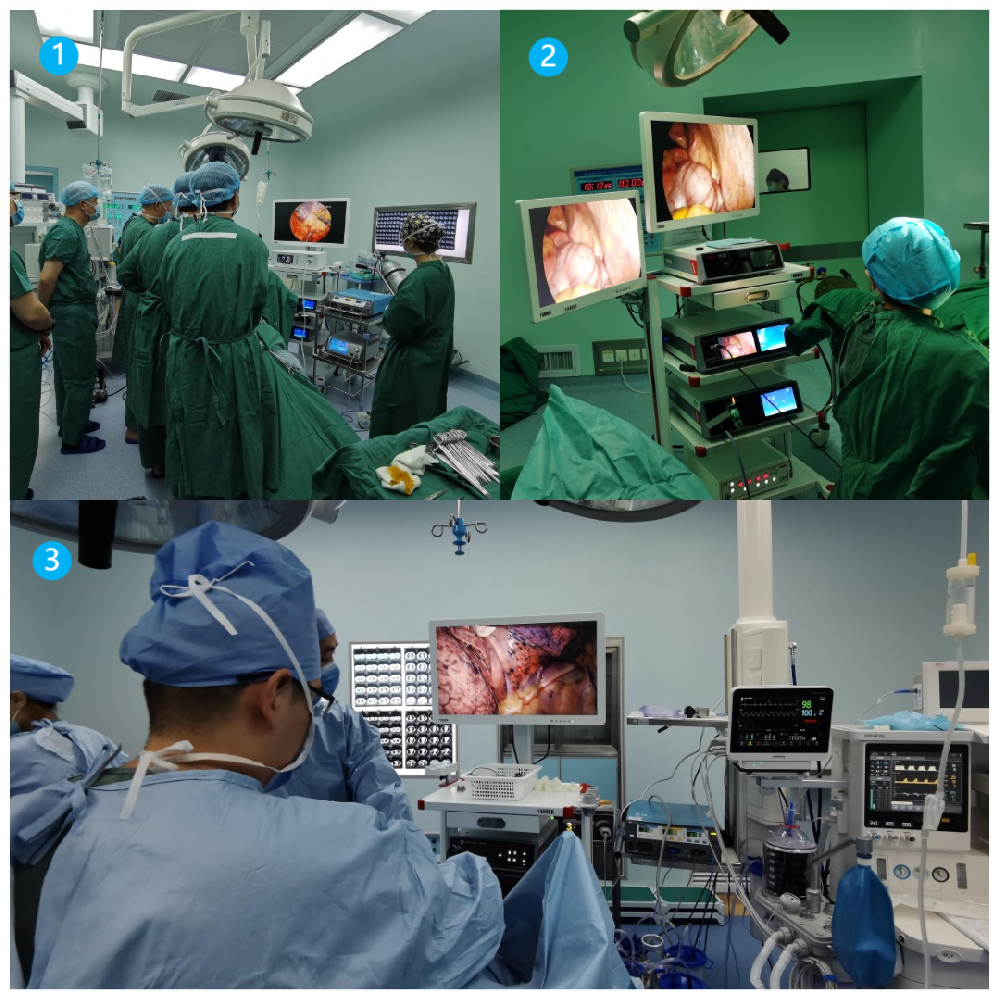- Shanghai, China
- [email protected]
- +86-21-58189111
Scope of application
In recent years, minimally invasive surgery, which has the advantages of less trauma, quick recovery, less pain, and high cure rate, has developed rapidly. Laparoscopy, as a representative of minimally invasive surgery, is widely used in the field of surgery, involving many diseases and operations, and is welcomed by patients. , and with the continuous progress of science and technology, the improvement and innovation of surgical instruments, the display space of laparoscopy will become larger and larger.
Scope of laparoscopic surgery:
(1) Hepatobiliary surgery
Cholecystectomy, choledocholithotomy, liver resection, fenestration and drainage of hepatic cyst, drainage of liver abscess, and biliary-enteric drainage.
Spleen and Pancreatic Disease Surgery
Splenectomy, fenestration and drainage of splenic cyst, internal drainage of pancreatic pseudocyst, partial pancreatectomy.
(2) Gastrointestinal surgery
Subtotal gastrectomy, vagotomy, appendectomy, ulcer perforation repair, gastric volume reduction for obesity, intestinal adhesion release, colorectal tumor resection.
(3) Surgery for thoracic disease
Lobectomy, Bullectomy, Spontaneous Hemothorax Surgery, Esophagectomy, Achalasia Surgery, Hiatal Hernia Surgery, Thymoma Resection, Mediastinal Tumor Resection, Pericardium Fenestration, Artery Patent duct ligation.
(4) Surgery for neck and breast diseases
Thyroid, parathyroid surgery, breast cancer axillary lymph node dissection, lumpectomy.
(5) Surgery for diseases of the urinary system
Nephrectomy, adrenalectomy, ureterolithotomy, pyeloplasty, bladder diverticulectomy, renal cyst fenestration.
(6) Surgery for gynecological diseases
Hysterectomy, myomectomy, ovarian cystectomy, ectopic pregnancy surgery, tubal surgery, infertility exploration, pelvic dissection.
(7) Others
Inguinal hernia repair, ligation of communicating branches of great saphenous varices. Especially in inguinal hernia surgery, it can greatly reduce the recurrence rate of surgery, and is used for pediatric hernias, middle-aged and elderly hernias, and frail hernia patients.
Laparoscopic minimally invasive techniques can treat almost all gynecological diseases, such as ectopic pregnancy, benign ovarian tumors, pelvic endometriosis, uterine prolapse, polycystic ovary, uterine fibroids, hysterectomy, hysterectomy Surgery, infertility diagnosis and treatment. Minimally invasive surgery saves women from the pain of open abdomen and the burden of illness, and regaining their health is just around the corner.

Indications
Laparoscopic diagnosis
① Understand the location, source, nature and size of the pelvic and abdominal mass, and biopsy if necessary.
② Find the cause of infertility, determine the corrective method, and judge the reproductive prognosis and results.
③Diagnosis, staging and follow-up of treatment effect of endometriosis.
④ Identify the causes of acute and chronic abdominal pain.
⑤ Understand the location of genital tract malformation, ovarian morphology, biopsy if necessary.
⑥ Efficacy and prognosis evaluation of malignant genital tract tumors after surgery or chemotherapy
Laparoscopic surgery
①Pelvic mass: ovarian cyst fenestration, drainage, ovarian tumor stripping, adnexectomy, mesosalpinx cystectomy, etc.
② Uterine fibroids: uterine fibroids, adenomyoma stripping, adenomyosis removal, hysterectomy, etc.
③ Conservative or radical surgery should be performed at the same time for the early diagnosis of ectopic pregnancy.
④Pelvic adhesion decomposition and salpingoplasty were performed at the same time as the cause of infertility was diagnosed.
⑤ Coagulation or resection of endometriosis lesions.
⑥Check the pathogens of pelvic infectious diseases, and perform pelvic adhesion decomposition, abscess incision and drainage, and tubo-ovarian cystectomy at the same time.
⑦Family planning: removal of birth control ring, repair of uterine perforation wound, sterilization, tubal anastomosis.
⑧ Reproductive assistance: mature egg absorption, gametophyte intrafallopian transplantation, polycystic ovary puncture, punching.
⑨ Reproductive tract malignant tumor surgery: early endometrial cancer, cervical cancer, ovarian cancer surgery, including extensive hysterectomy, pelvic and para-aortic lymph node resection, omentum and appendectomy.
Contraindications
①Severe heart, lung, liver and kidney insufficiency.
② Huge mass in the pelvis and abdominal cavity: the upper boundary of the mass exceeds the level of the umbilicus or the gravid uterus is greater than 16 weeks of gestation, and when the volume of uterine fibroids exceeds 4 months of pregnancy, the space for surgical operation in the pelvis and abdominal cavity is limited, the mass obstructs the visual field, and the establishment of pneumoperitoneum Or puncture may cause the mass to rupture.
③ Abdominal hernia or diaphragmatic hernia: The pressure of artificial pneumoperitoneum can press the contents of the abdominal cavity into the hernia hole, causing incarceration of the abdominal hernia. Abdominal contents enter the thoracic cavity through diaphragmatic hernia, which can affect cardiopulmonary function.
④ Diffuse peritonitis with intestinal obstruction: Due to the obvious expansion of the intestinal segment, the risk of intestinal perforation is likely to occur when the pneumoperitoneum needle or trocar is punctured.
⑤ inexperienced surgeons.
Severe pelvic adhesions: Dense and extensive adhesions around important organs or tissues caused by repeated operations such as intestinal surgery and multiple myomectomy, such as adhesions of ureters and intestinal flexures. organ or tissue damage.
Leave a Comments